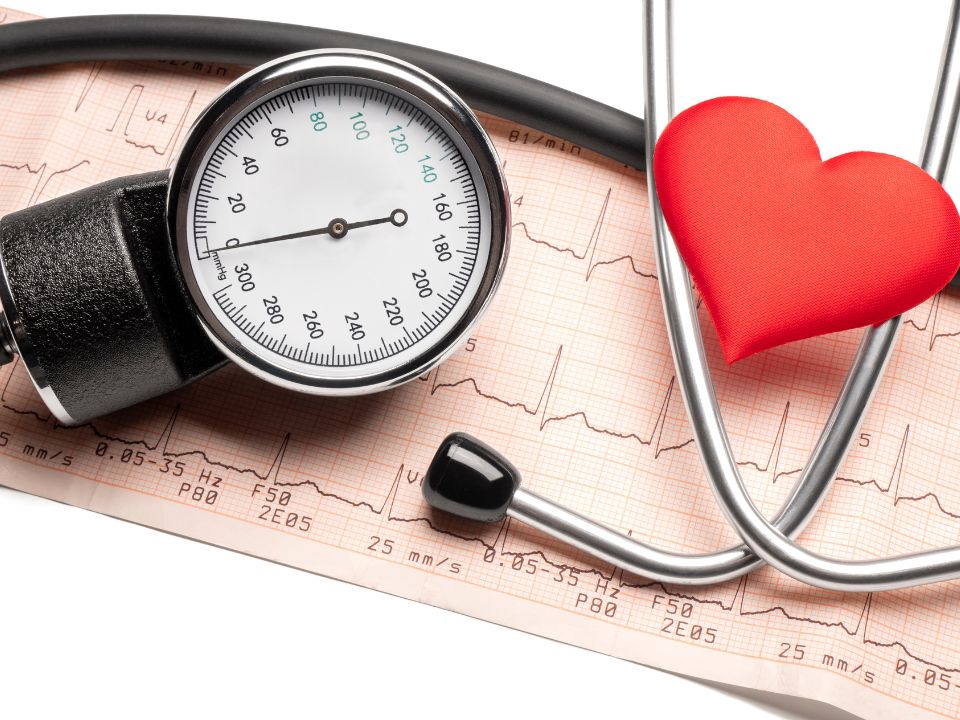
Author: Dr. Porzio, Cardiologist
May is High Blood Pressure Education Month. It’s to raise awareness of high blood pressure (hypertension) because most people are unaware they it.
Heart disease is one of the leading causes of death and making simple changes can make a big difference! Organizations such as the CDC and Millions Hearts are making an effort to challenge Americans to prevent 1 million heart attacks and strokes by 2025. Some ways to get your heart on a healthy track are: exercise frequently, quit smoking (if you do smoke), swap healthy eating choices for bad ones, and to control high blood pressure.
Hypertension (high blood pressure – HTN) is also known as “the silent killer” due to its nature of having no symptoms until something happens, leaving irreversible damage or possible death. Untreated or inadequately treated HTN leads to early death, stroke, heart attack, heart failure, and kidney failure. This is why it is imperative to identify and treat patients for HTN as soon as it has been recognized. Statistically, most people will develop HTN in their lifetime. In fact, 90% of males older than 55 will develop HTN before the age of 85 while a similar number of females older than 65 will also go on to become hypertensive. For many of us it is not a matter of if we will develop HTN but when. A blood pressure value can fall into four ranges or categories. For reference, the top number is the systolic blood pressure (SBP) and is the driving pressure pushing blood through the vessels. The bottom number is the diastolic blood pressure (DBP) or back pressure/resistance to the flow of blood through the vessels:
Category | Blood Pressure Range | Treatment |
Normal blood pressure | < 120/80 | None |
Prehypertension | 121-139/81-89 | Monitor, lifestyle changes |
Stage 1 hypertension | 140-159/90-99 | Initiate medication, lifestyle changes |
Stage 2 hypertension | > 160/100 | Initiate medications (2 or more), lifestyle changes |
The diagnosis of HTN is not made based on a single measurement. Blood pressure increases over time. The best way to determine if someone is hypertensive and requires drug therapy is to monitor the pressure and keep a log of the values. The typical recommendation is to take the BP in the morning ideally before consumption of coffee, a meal or medications. After 1-2 weeks of home monitoring, the physician can analyze the data to determine if indeed hypertension is present, at what stage, and discuss the treatment options. Typically diagnostic tests would then be performed to determine if there has been any organ damage. The patient would ideally continue to monitor the BP with treatment to determine the best regimen of medication(s). Another important aspect of treatment is patient understanding and participation with lifestyle changes that include regular exercise, weight loss and reduction of salt and alcohol in the diet.
Hypertension is a common disease in developed countries that is easily identified and treated. If left unrecognized or untreated it can wreak havoc on one’s body resulting in serious cardiovascular complications and or premature death. Remember, there is no shame in having high blood pressure…the only shame is not treating it when the diagnosis is made. If you have HTN or are concerned that you might, it is best to see a physician to help you navigate through all aspects of the diagnosis and treatment of this “silent killer”.
The information provided is for general interest only and should not be misconstrued as a diagnosis, prognosis or treatment recommendation. This information does not in any way constitute the practice of medicine, or any other health care profession. Readers are directed to consult their health care provider regarding their specific health situation. Marque Medical is not liable for any action taken by a reader based upon this information.


